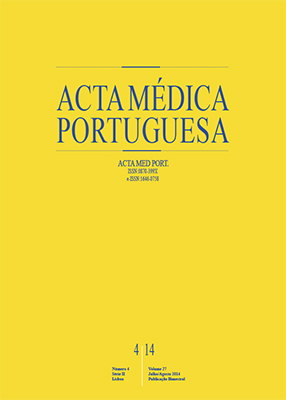The Evaluation of QT Intervals During Diagnosis and After Follow-Up in Acromegaly Patients
DOI:
https://doi.org/10.20344/amp.4966Abstract
Introduction: It was aimed to calculate QT intervals in patients with acromegaly and to reveal its correlation between QT intervals, and growth hormone and insulin like growth factor-1.
Material and Methods: Forty-one patients with acromegaly were enrolled into the study. Another 41 individuals with similar features, such as comorbid diseases, age and sex constituted the control group. The electrocardiographies of patients with acromegaly were evaluated at the baseline and after the follow- up. Only one electrocardiography was performed for controls. QT maximum, QT minimum, QT dispersion, corrected QT maximum, corrected QT minimum and corrected QT dispersion were calculated.
Results: Baseline QT maximum, QT dispersion, corrected QT maximum and corrected QT dispersion were significantly longer than the values of controls. Corrected QT maximum and corrected QT dispersion were significantly shorter after the follow-up, compared to the baseline in patients. QT maximum, QT dispersion, corrected QT maximum and corrected QT dispersion after the follow-up were not statistically different from the values of controls. Except the negative correlation between growth hormone and corrected QT dispersion in patients after the follow-up, no other correlation was detected between QT values and growth hormone or insulin like growth factor-1 levels. Corrected QT dispersion was found to be related with the disease duration in patients.
Discussion: For acromegaly patients, it is important to detect clinical predictors of cardiac arrhytmias. QT dispersion is considered a beneficial predictor for ventricular arrhytmias. When compared to controls, prolonged QT intervals were determined in our acromegalic patients.
Conclusion: We consider that QT intervals may also be utilized in the evaluation of increased cardiovascular risk in patients with
acromegaly.
Keywords: Acromegaly; Arrhythmias, Cardiac; Electrocardiography; Heart Rate.
Downloads
Downloads
Published
How to Cite
Issue
Section
License
All the articles published in the AMP are open access and comply with the requirements of funding agencies or academic institutions. The AMP is governed by the terms of the Creative Commons ‘Attribution – Non-Commercial Use - (CC-BY-NC)’ license, regarding the use by third parties.
It is the author’s responsibility to obtain approval for the reproduction of figures, tables, etc. from other publications.
Upon acceptance of an article for publication, the authors will be asked to complete the ICMJE “Copyright Liability and Copyright Sharing Statement “(http://www.actamedicaportuguesa.com/info/AMP-NormasPublicacao.pdf) and the “Declaration of Potential Conflicts of Interest” (http:// www.icmje.org/conflicts-of-interest). An e-mail will be sent to the corresponding author to acknowledge receipt of the manuscript.
After publication, the authors are authorised to make their articles available in repositories of their institutions of origin, as long as they always mention where they were published and according to the Creative Commons license.









